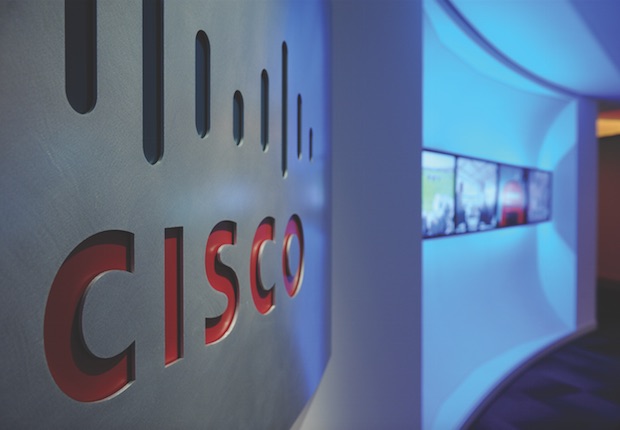
Employee Benefits Live 2018: Multinational technology organisation Cisco has embraced and promoted a family-centric organisational culture, and corresponding customisable benefits, in order to support the wellbeing of its 73,400 global employees and enable them to better manage the integration between their personal and professional lives.
In a session titled ‘Flexing to meet the demands of the modern family: a global perspective’, Amanda Diston, director, international total rewards at Cisco, said: “The benefits of yesterday are not fit for purpose for our organisation. If we want to truly drive inclusion, we want to create an environment that will engage people, keep them engaged, that will also have them own the information that’s out there and available to them and make decisions themselves, then actually, we need to take a significant step away from the traditional and look at how do we provide things that are customisable?”
For Cisco, this approach includes considering broad notions of family, whether this refers to same sex relationships, divorcees and their second families, friends and flatmates rather than spouses, or the sandwich generation, caring for both children and elderly parents. This family-focused organisational culture is then used to shape the employee benefits on offer, to ensure they are customisable and applicable to employees’ varying life stages and situations, as well as inclusive considering their global location.
“We looked to have our plans be customisable. We need plans where employees can pick and choose what might feel right for them in that moment, and could be increasing life insurance, that could be reducing life insurance, it could be marriage, it could be adding a new child to the healthcare cover,” Diston explained. “In countries where [having] multiple wives are allowed, it could be needing to cover multiple wives on a plan, or operating a plan that doesn’t show an interest rate because under sharia law, it’s not allowed. It’s really about understanding all our markets and making sure that for that environment, we can be as inclusive as we possibly can.”
This has posed a challenge in sourcing providers, however. Diston noted that the organisation informed its vendors that inclusivity had to be included in its benefits, or Cisco would take its business elsewhere.
More obviously linked to family-friendly benefits is the work Cisco has done around its leave arrangements, most notably by setting a fixed global minimum of time off for maternity and paternity leaves, regardless of which of the organisation’s 96 operating countries employees are based in. Cisco also offers up to three grandparents’ leave days, extended carers leave and emergency time off. Employees can also access counselling services, either for themselves, or for their children who may have special needs or mental health issues.
Linked to the ethos of family care is wellbeing; a topic Cisco takes seriously within its global wellbeing programme. This centres around encouraging small, incremental changes in health behaviours, with line managers accountable for leading the programme. This is particularly pertinent because health and wellbeing goals are featured in weekly performance management check in meetings.
A big challenge in this area, observed Diston, is around work-life balance. The demands of a global business make maintaining traditional office hours unrealistic for many Cisco employees, who may need to start early to speak to some time zones, or work later in order to contact others. Diston explained that Cisco focuses on work-life integration, rather than work-life balance, recognising this potential conflict and providing employees with tools to mitigate any negative effects caused by these working patterns.
Diston said: “We want people to be able to have balance, but actually, we’ve realised that it’s probably more work-life integration that’s more realistic for us. What that means is take a morning off if [employees] have a quiet morning, go and do what [individuals] need to do in that time. We’re not watching [their] hours, we’re watching [their] output. We stopped trying to find a solution for work-life balance because in our global environment and our global way of working, it just wasn’t realistic, so we almost had to say to people ‘you’re adults, find the right balance. We’ll put the programmes out there for you, we’ll put the tools out there for you, but you need to find the right way to balance’.”
Employees have even spoken out about ways to achieve this balance, thanks to the organisation’s engagement pulse survey. Feedback from this led to the introduction of a volunteering initiative, which enables staff to take 40 hours a year to do volunteer work, and the organisation awarding every employee a day off for their birthday.
As well as having the benefits themselves in place, Diston highlighted that communications around these are also vital. In particular, she noted that small, bite-sized pieces of information worked best because these are easy for staff to digest quickly. Cisco uses a mix of both paper and digital communications; this includes its TV channel, webinars, videos and films and employee groups. Cisco’s communications also feature a graphic focus because the organisation has found this more engaging for its employees.
“We know that we are not a good work-life balance culture. We know that, we’ll admit it. But actually, we do want employees and leaders to recognise that in order to drive up a healthy, productive environment, they have to have people own and feel responsible for their wellbeing. Our programme doesn’t focus on diet and exercise, it has that in it, but it focuses on how do [we] create a healthy balance of how to work? It focuses on mind and it focuses on the connections between [employees] and [their] leaders, [employers] and [their] employees, [employees] and [their] families and how they all intermingle into a day,” Diston concluded.